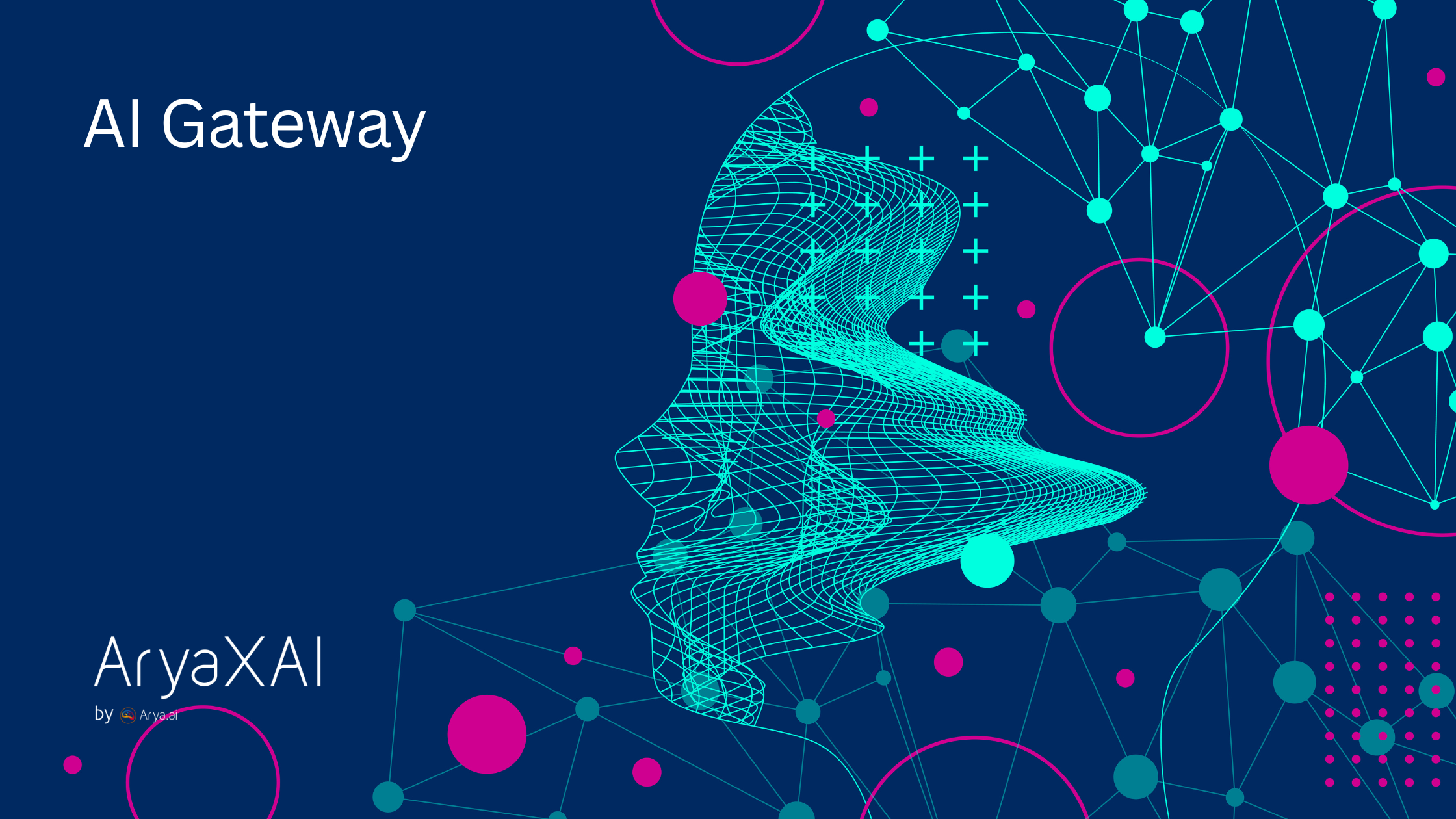Top 10 AI Research Papers of April 2025: Advancing Explainability, Ethics, and Alignment
10 minutes
May 2, 2025

April 2025 has become a defining moment in the path of artificial intelligence, a time of increased research that grapples with some of the most critical and complex problems facing the field today. With AI exponentially increasing its capabilities across sectors—medicine, finance, to creative industries—the demand for systems not just intelligent but also explainable, unbiased, and aligned with human values has reached a critical juncture.In this context, explainable artificial intelligence (XAI) has gained prominence, emphasizing the importance of making AI decision-making processes transparent and understandable to humans. Transparency and interpretability in AI are crucial for making good decisions and ensuring that AI systems are making good decisions, particularly in high-stakes domains where trust and oversight are essential.
Over the last few years, the conversation around AI has shifted from performance benchmarks to pressing questions of trust, transparency, and societal impact. This month’s research reflects that shift with unprecedented depth and nuance. Scholars and practitioners have explored explainability not just as a technical add-on, but as a foundational principle necessary for real-world deployment. Researchers and practitioners have investigated explainability not only as a technical add-on but as an essential principle required for deployment in the real world. Similarly, issues like bias reduction and AI hallucinations, which were once the domain of specialized discussions, are now front and center in building stable and secure systems. Simultaneously, the notion of alignment, a source of debate in philosophical and policy arenas, is being rooted in empirical and theoretical developments that may inform the regulation paradigms and architectures of future AI.
The ten articles included here cover a wide range of work, from rigorous meta-analyses and theoretical models to empirical surveys and conceptual frameworks. Together, they shed light on how the AI community is wrestling with questions of first principles:
- Can we trust black-box models when we can't explain them fully?
- How do we strike the right balance between performance, fairness, and auditability?
- Is perfect explainability even possible—or is it mathematically bound?
- And how do we make sure the world's most powerful AI systems stay in sync with human values over the long run?
Each of these papers offers a unique lens into these questions, helping to craft a future where AI doesn’t just work—it works responsibly. Whether you’re an AI researcher, developer, policymaker, or simply someone curious about the direction of technology, this curated list will provide valuable insights into how the AI field is evolving to meet its greatest challenges.
In the sections that follow, we unpack these ten landmark contributions, understand their core ideas and explore what they mean for the broader landscape of trustworthy AI.
1. Is Trust Correlated With Explainability in AI? A Meta-Analysis
Authors: Zahra Atf, Peter R. Lewis
Link: arxiv.org/abs/2504.12529
This meta-analysis by Atf and Lewis synthesizes findings from 90 empirical studies to explore the commonly held belief that explainability in AI directly leads to greater user trust. The findings indicate a statistically significant but only moderate positive relationship, which implies that explainability does build trust but is by no means the only factor. Trust in AI, the authors contend, is determined by a multifaceted interplay of factors including context of application, user technophilia, and the usefulness or transparency of the explanations themselves. For instance, an explainable AI deployed within a high-stakes medical environment may create entirely different trust dynamics than the same system applied within an e-commerce recommendation system.
The research also reveals that explainability affects various aspects of trust in different manners—it strengthens perceived transparency more than reliability or competence. Notably, the article warns that too verbose or ill-crafted explanations can even decrease trust from cognitive overload. These revelations reinforce the imperative for a more comprehensive, user-focused approach towards designing explainable systems. Instead of depending on technical interpretability alone, the authors recommend incorporating human-centered design standards and contextual understanding in order to build valuable, sustained trust in AI systems.
2. A Multi-Layered Research Framework for Human-Centered AI
Authors: Chameera De Silva, Thilina Halloluwa, Dhaval Vyas
Link: arxiv.org/abs/2504.13926
This paper presents a compelling new direction for explainable and trustworthy AI by introducing a multi-layered research framework explicitly designed to center human users in the loop. The proposed architecture relies on three interlinked layers: (1) a Foundational AI Model that embeds explainability mechanisms withinthe algorithm itself, (2) a Human-Centered Explanation Layer that tailors explanations to the user's domain knowledge, objectives, and cognitive constraints, and (3) a Dynamic Feedback Loop that iteratively optimizes explanations in real time based on actual user engagement. This framework goes beyond rigid, one-size-fits-all descriptions and instead invites adaptability and context, those fundamental aspects too often left out of conventional XAI strategies.
The system is tested across a range of disparate high-stakes domains—healthcare, finance, and software engineering—to evaluate its real-world influence. In healthcare, for instance, the explanation layer was adapted to align with the reasoning process of medical experts, contributing to enhanced diagnostic assurance and more accurate second opinions. In finance, the dynamic feedback loop facilitated real-time justification refinement, improving regulatory transparency. In all areas of application, the framework showed considerable promise for enhancing decision quality, user engagement, and accountability standards. In addressing explainability not merely as a technical functionality, but as a human experience, the authors offer a practical model for designing AI systems that are both effective and meaningfully attuned to their users.
3. The Limits of AI Explainability: An Algorithmic Information Theory Approach
Author: Shrisha Rao
Link:arxiv.org/abs/2504.20676
In this insightful paper, Shrisha Rao brings algorithmic information theory to the study of theoretical limits to explainability in AI. Instead of presenting new explanation techniques, the paper explores deeply into mathematical bounds on our explanatory capabilities for comprehending sophisticated models. Rao presents the Complexity Gap Theorem, which demonstrates that any explanation that is simpler by a meaningful margin than the original model necessarily must deviate from the model's true behavior on at least some inputs. This captures a fundamental insight in explainability research: the further we simplify, the more we lose fidelity. Secondly, the paper also presents complexity bounds on explanations, which demonstrate that explanations increase polynomially with error tolerance (in the case of Lipschitz-continuous functions), but grow exponentially with increasing input dimensionality, resulting in a scalability issue.
One of the most fascinating contributions of the paper is the Regulatory Impossibility Theorem, which posits that no regulation or regulatory system can do all of the following at the same time: provide unrestricted AI power, complete human-interpretable explanations, and error rates of zero. Essentially, there is some unavoidable trade-off: attempting to optimize all three desires creates inherent contradictions. This has profound implications for policymakers and developers alike, underscoring that attempts to control AI must begin with a realistic notion of the mathematical limitations. Instead of treating explainability as a technical issue, Rao is setting it up as a philosophical and policy issue, where difficult trade-offs between transparency, performance, and control need to be made. This work is a strong reminder that though explainability is critical, it is also necessarily limited within the confines of information theory, and that good AI design must operate within such boundaries.
4. Explainability for Embedding AI: Aspirations and Actuality
Author: Thomas Weber
Link: arxiv.org/abs/2504.14631
As artificial intelligence becomes increasingly integrated into everyday software systems, the need for effective and reliable development and maintenance of these systems has become paramount. In this insightful paper, Thomas Weber delves into the challenges faced by software developers in understanding and managing the complexity inherent in AI systems. Through a series of surveys, Weber highlights a growing demand among developers for explanatory tools that can aid in tasks such as debugging and system comprehension.
Despite the recognized importance of explainable AI (XAI), the paper reveals a significant gap between the aspirations for XAI and the current reality. Existing XAI systems often fall short in providing the necessary support mechanisms for developers, leaving them ill-equipped to handle the intricacies of embedding AI into high-quality software. There is a particular need for tools that help developers understand how the model works internally and interpret the output created by AI systems, which is crucial for transparency, trust, and effective integration. Weber's findings underscore the pressing need for the development of more effective explanatory tools that can bridge this gap, ultimately facilitating better integration of AI into software development processes.
5. Beware of "Explanations" of AI
Authors: David Martens, Galit Shmueli, Theodoros Evgeniou, Kevin Bauer, Christian Janiesch, Stefan Feuerriegel, Sebastian Gabel, Sofie Goethals, Travis Greene, Nadja Klein, Mathias Kraus, Niklas Kühl, Claudia Perlich, Wouter Verbeke, Alona Zharova, Patrick Zschech, Foster Provost
Link: arxiv.org/abs/2504.06791
In this critical examination, the authors delve into the complexities and potential pitfalls of explainable AI (XAI). While XAI aims to make AI systems more transparent and trustworthy, this paper cautions against uncritical acceptance of AI-generated explanations. The authors argue that explanations are not inherently beneficial and can sometimes be misleading or even harmful.
The paper highlights that the effectiveness of an explanation is highly context-dependent, varying with the goals, stakeholders, and specific applications involved. Poorly designed explanations can lead to misunderstandings, overconfidence in AI systems, and unintended consequences. The authors emphasize the need for rigorous evaluation of explanations, considering factors like relevance, accuracy, and potential for misinterpretation. They advocate for a more nuanced approach to XAI, integrating insights from social and behavioral sciences to ensure that explanations genuinely enhance understanding and decision-making.
6. Legally-Informed Explainable AI
Authors: Gennie Mansi, Naveena Karusala, Mark Riedl
Link:arxiv.org/abs/2504.10708
In this timely and urgent paper, Mansi, Karusala, and Riedl propose a framework for Legally-Informed Explainable AI (LIXAI), emphasizing the need to integrate legal considerations into AI explanations, particularly in high-stakes domains such as healthcare, education, and finance. The authors contend that for AI explanations to be practical, they should be both actionable—enabling users to make well-informed decisions—and contestable—allowing users to dispute and pursue redress against AI decisions. This dual focus ensures that AI systems not only offer transparency but also enable users to steer and, if necessary, challenge decisions that affect their lives.
The paper identifies three key stakeholder groups—decision-makers, decision-subjects, and legal representatives—each with distinct informational needs and levels of actionability. For example, medical practitioners may need to be informed about how AI suggestions align with legal codes to make decisions that balance both patient welfare and their own liability. Within this, the authors offer detailed practical recommendations for the construction of AI explanations that fulfill these divergent needs by advocating for a kind of sociotechnical approach that is cognizant of the legal context in which AI systems operate. When designing explainable AI systems, it is essential to meet legal requirements and conduct thorough risk assessment to ensure compliance and manage potential risks associated with AI deployment. By embedding legal considerations into the design of AI explanations, LIXAI aims to promote accountability, trust, and fairness, ensuring that AI systems serve as tools for empowerment rather than sources of opacity and potential harm.
7. Reinforcement Learning for LLM Reasoning Under Memory Constraints
Authors: Alan Lee, Harry Tong
Link:arxiv.org/abs/2504.20834
In this innovative study, Lee and Tong tackle the challenge of enhancing reasoning capabilities in large language models (LLMs) within the confines of limited computational resources. Recognizing that traditional reinforcement learning (RL) methods, such as Proximal Policy Optimization (PPO), are often impractical due to their high memory and compute demands, the authors introduce two novel, memory-efficient RL techniques: Stochastic-GRPO (S-GRPO) and Token-Specific Prefix Matching Optimization (T-SPMO).
S-GRPO is a lightweight variant of Group Relative Policy Optimization (GRPO) that reduces memory usage by sampling tokens from output trajectories, thereby eliminating the need for a separate critic network. T-SPMO, on the other hand, assigns credit at a token granularity, enabling fine-grained optimization without the overhead of full-model fine-tuning. When applied to the Qwen2-1.5B model using LoRA-based fine-tuning on a single 40GB GPU, both methods demonstrated significant improvements in reasoning tasks. For instance, S-GRPO increased accuracy on the SVAMP benchmark from 46% to over 70%, while T-SPMO achieved a remarkable 70% accuracy on a multi-digit arithmetic task. These improvements reflect enhanced model performance and prediction accuracy as measured on the test dataset, highlighting the effectiveness of the proposed methods in evaluating and optimizing LLMs. These results underscore the potential of RL fine-tuning under constrained environments, making advanced reasoning capabilities accessible to a broader research community.
8. Modular Machine Learning: An Indispensable Path towards New-Generation Large Language Models
Authors: Xin Wang, Haoyang Li, Zeyang Zhang, Haibo Chen, Wenwu Zhu
In this forward-thinking paper, the authors introduce Modular Machine Learning (MML) as a transformative paradigm aimed at addressing the inherent limitations of current Large Language Models (LLMs), such as reasoning deficits, factual inconsistencies, and lack of interpretability. MML proposes a decomposition of LLMs into three interdependent components: modular representation, modular model, and modular reasoning. This structured approach seeks to enhance counterfactual reasoning, mitigate hallucinations, and promote fairness, safety, and transparency in AI systems.arXiv
The paper outlines how MML can clarify the internal mechanisms of LLMs through the disentanglement of semantic components, allowing for flexible and task-adaptive model design. Additionally, it facilitates interpretable and logic-driven decision-making processes. Interpretable machine learning techniques are essential in this context, as they make these new-generation models more transparent, understandable, and trustworthy for users. To implement MML-based LLMs, the authors leverage advanced techniques such as disentangled representation learning, neural architecture search, and neuro-symbolic learning. This approach aims to pave the way for the development of next-generation LLMs that are not only more capable but also more aligned with human values and societal norms.
9. ApproXAI: Energy-Efficient Hardware Acceleration of Explainable AI using Approximate Computing
Authors: Ayesha Siddique, Khurram Khalil, Khaza Anuarul Hoque
Link: arxiv.org/abs/2504.17929
In this innovative study, Siddique, Khalil, and Hoque address the pressing challenge of balancing the computational demands of explainable AI (XAI) with the need for energy efficiency in hardware systems. They introduce ApproXAI, a novel framework that leverages approximate computing techniques to accelerate XAI processes while reducing energy consumption. The authors demonstrate that by intentionally introducing controlled approximations in non-critical computations, significant energy savings can be achieved without compromising the quality of the explanations provided by AI systems.
The paper presents empirical results showcasing the effectiveness of the ApproXAI framework in various XAI applications, highlighting its potential to make explainable AI more accessible and sustainable. This work paves the way for the development of energy-efficient hardware solutions tailored for the growing demand for transparency and interpretability in AI systems.
10. Random-Set Large Language Models
Authors: Muhammad Mubashar, Shireen Kudukkil Manchingal, Fabio Cuzzolin
Link: arxiv.org/abs/2504.18085
In this groundbreaking research, the authors propose the concept of Random-Set Large Language Models (RS-LLMs), aiming to model the inherent ambiguity of conventional large language models' (LLMs) outputs. Whereas typical LLMs output a single probability distribution over the subsequent token, RS-LLMs output a finite random set (belief function) over the token domain, covering the epistemic uncertainty of the model's predictions.
To efficiently implement this approach, the authors propose a methodology based on hierarchical clustering for selecting and applying a budget of "focal" sets of tokens instead of exploring every possible set of tokens. This approach makes the method scalable and effective. RS-LLMs are tested on the CoQA and OBQA benchmarks with models such as Llama2-7b, Mistral-7b, and Phi-2. The findings show how RS-LLMs perform better than normal models when it comes to the correctness of answers and show improved ability in estimating second-level uncertainty in prediction, thus offering a way to identify hallucinations.
Conclusion
The paper released in April 2025 provides a broad perspective on the changing priorities of the AI society. As these ten papers illustrate, the field is moving beyond a fixation on raw performance and entering a new era where explainability, alignment, and legal and ethical robustness are front and center. Whether it's the theoretical boundaries of explainability, the human-centric design of explanations, or the integration of legal norms into AI outputs, each study contributes essential insights that push the boundaries of what responsible AI can—and should—look like.
A recurring theme across these works is the recognition that AI systems do not exist in a vacuum. Their success and societal acceptance hinge not only on technical sophistication but also on the clarity with which they communicate decisions, the fairness with which they operate, and the values they encode. From practical tools for developers and legal frameworks for accountability to memory-efficient training methods and modular architectures, these papers collectively point toward a future where intelligence is inseparable from responsibility.
As we look ahead, this month's research reaffirms an essential message: the path to AI's future does not lie in deciding between performance and ethics, but in creating systems that integrate both. The path to safe, aligned, and trustworthy AI is not purely an engineering challenge—it is a multidisciplinary odyssey that requires collaboration across domains, industries, and viewpoints. And April 2025 has made it clear:: that journey is already well underway.
SHARE THIS
Discover More Articles
Explore a curated collection of in-depth articles covering the latest advancements, insights, and trends in AI, MLOps, governance, and more. Stay informed with expert analyses, thought leadership, and actionable knowledge to drive innovation in your field.

Is Explainability critical for your AI solutions?
Schedule a demo with our team to understand how AryaXAI can make your mission-critical 'AI' acceptable and aligned with all your stakeholders.



.png)




















